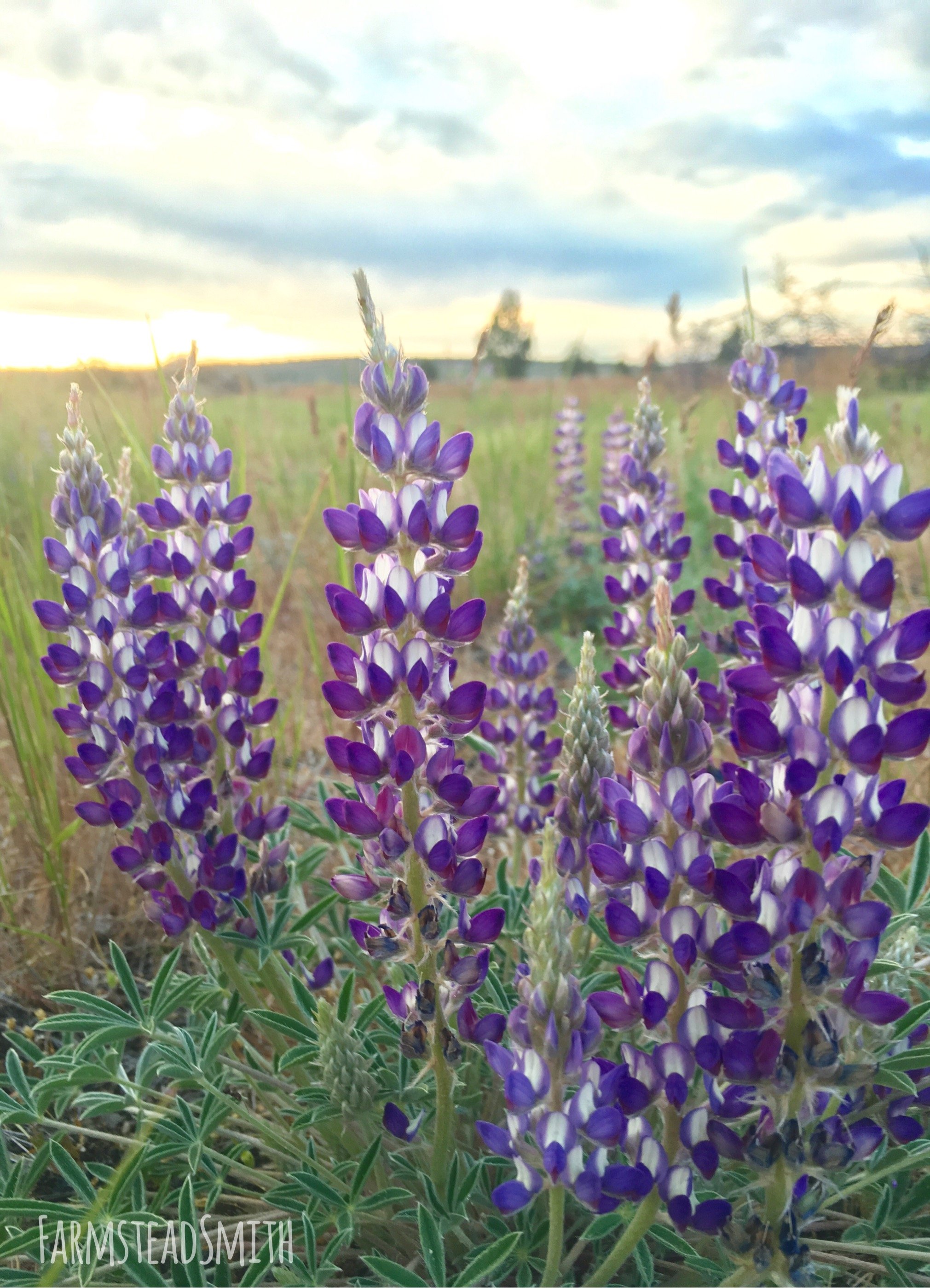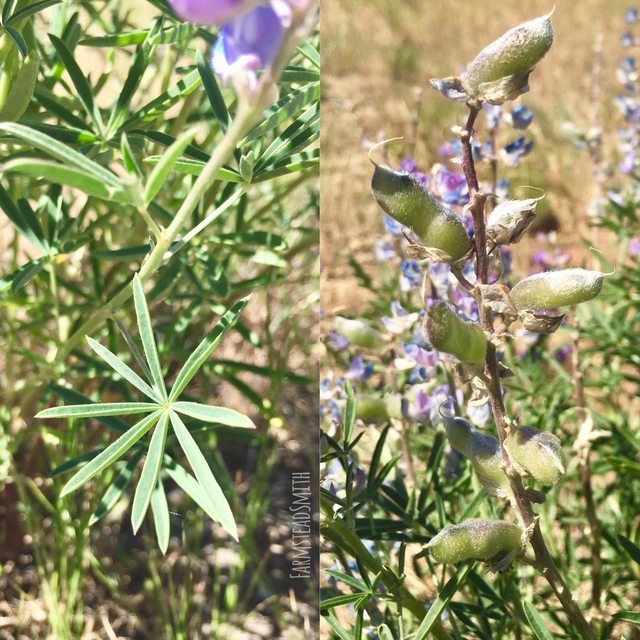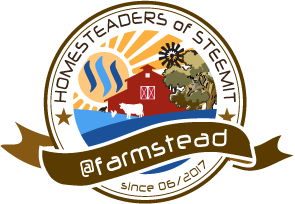I've been waiting for Sunday (ColorChallenge PURPLE DAY) to roll around so I can show you one my favorite Wildflowers that grows rampant on my farmstead and in the area. Lupine!

I took this picture with my iPhone.
Silvery Lupine (Lupinus argenteus var. argenteus)
Silvery Lupine is a part of the Fabaceae (Pea Family). It is a great nitrogen fixer and native pollinators totally love it. I shared the other day about the Silvery Blue Butterfly, which like to lay eggs on Fabaceae type plants.
These plants are a perennial to my area and come back on their own and they reseed themselves real nicely. These are able to grow in full sun to part shade environments where the ground is real dry and can also be rocky.
They started blooming in May and are continuing to bloom while their seed pods are developing, drying up, and even releasing seed - they're supposed to bloom throughout the summer season.
Silvery Lupines are native to much of the Western North Americas, from the South Western parts of the Canadian provinces down through much of California.

Poisonous
Lupines are a poisonous plant so you wont want to eat any part of it, even if the seed pods look like tasty pea-pods. Lupines can be very poisonous to pets, dogs (learn more about lupine poisoning in dogs) (I believe 99% of dogs are smart enough not to eat them - my dog hasn't), and livestock such as horse, sheep, and cattle. Sometimes if a cow eats lupine during certain gestational periods, the fetus can have birth defects. Poisonings can be avoided if hungry animals are kept away during times of high toxicity like in the beginning growth stage of a young plant and during the seeding stage in the fall.
Not all lupines are poisonous, nor do all species cause birth defects. Six of the poisonous species implicated in "crooked calf disease" are silky lupine (L. sericeus), tailcup lupine (L. caudatus), velvet lupine (L. leucophyllus), silvery lupine (L. argenteus), lunara lupine (L. formosus), and yellow lupine (L. sulphureus). (USDA)
Beneficial Plants
Lupines are, however, very beneficial plants as they attract lovely pollinators like bees, butterflies, and hummingbirds and they are Nitrogen Fixers. They are deer resistant which makes them a great plant to grow if you have a wildlife nuisance like deer! Deer will often overlook these for more juicy looking plants, but will go after these if there's a large deer population or if other food sources are not available.
I urge you to find plants native to your area because native plants are great to grow in your garden as they often don't take to many diseases as easily and after establishment they don't require as much, if any additional waterings! The plant shown here has not had any additional water other than what the rains have given (and that's not much at all).
**Please note:** *I am not a professional plant identifier but the Silvery Lupine is the closest I could get on this identification. Lupines are hard to identify because they all look very similar, they also have different growth patterns in different environments even if they are of the same variety. *
I have what I think are three different kinds of lupine on my property. One being a low growing type (which I think are commonly called "Prairie Lupine" and then this type which grow 1-3 feet tall and the other being a mid-size that get to be around 1-2ft tall. -- If you think I have the identification incorrect, please kindly let me know what you think the plant actually is, why, and a reputable resource explaining, thank you! I am eager to learn!
Info Sources
- Wildflower.org
- PNW Flowers
- Home Guides
- United States Department of Agriculture
- Permaculture Magazine

Check out my most recent Steemit Posts.
- How to Make a Chick Brooder
- Why Steemit is Great for Your Homestead
- Markdown Editors - Post Formatting Made Easier
- ColorChallenge WednesdayYellow
- Introducing, THE DOG
- Seven Days In - My Thoughts and Experiences of Steemit Thus Far.
- Nature on the Farmstead #1
- Meet the Gucklings - The Guckling's New Space
Blog Series
- Nature on the Farmstead - These posts will be educational and informative about the nature that happens on my farmstead. Look forward to posts about wild animals, birds, wildflowers and plants, insects, and more!

Badge by @daddykirbs
Get yours here!
